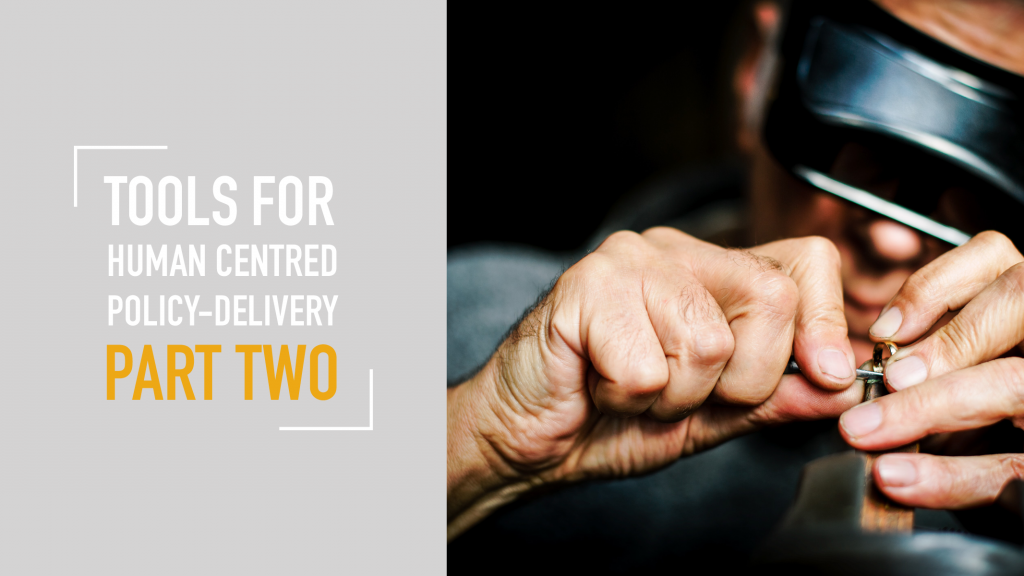In our last Blog, we introduced you to a selection of tools and methods to identify the needs of users/citizens in a human-centered policy-making process.
This blog will focus on approaches that will help policy-makers design and test a new policy that addresses identified needs. Besides an introduction to the tools, we will also provide you with real-life examples where these approaches have already been applied in the public sector.
Implement and test
We have argued in our process description for the inclusion of the citizens’ perspective at every stage of the policy-making process. The following set of tools will support you in developing a policy that will solve the identified problems effectively and sustainably:
Co-creation Workshop
- What it is: Relevant stakeholders that contribute a broad range of perspectives (e.g. public servants, citizens, business owners, special interest groups) work together to design a new policy. In the end, a solution is created that fits the needs of all stakeholders involved.
- Real-life example: In 2015, the Canadian government chose a co-creative approach to design their Innovation and Social Finance Strategy. 16 citizens were selected in a transparent and open process to represent different sectors (private, public, social) as well as to ensure diversity in gender and ethnicity. In working sessions they developed recommendations for a new policy. These suggestions were included by policy-makers in an 800 million $ spending plan of the government to foster social innovation, equity and gender equality in Canada.
- Here you can find a handbook on how to plan and implement co-creative approaches.
Citizens Jury
- What it is: Randomly selected citizens are exempted from their ordinary duties (like work) and spend several days contextualizing a new policy. They do not bring special expertise in the field of the new policy, therefore ensuring outsiders’ perspectives (in contrast to the previous approach in which participants are affected stakeholders).
- Real-life example: In 2014, the Australian City of Darebin used a citizen jury to design the process of implementing a participatory budget. 16 randomly selected citizens worked out eight recommendations on what the participatory budget process should include. All suggestions developed by citizens were accepted by the City Council. The inputs of the jury were so helpful to politicians and policy-makers that they decided to hold these sessions regularly to improve on the existing budgetary process.
- Here you can find more information on what to consider when organizing a citizens jury in your context.
Prototyping:
- What it is: Before fully implementing a new policy it is helpful to test its potential on a smaller scale and to identify things that have been overlooked in the design process. There are a variety of approaches available for that step: from Mockups to test digital services to Regulatory Sandboxes to test new technologies in real-life conditions
- Real-life example: Taiwan created a regulatory sandbox in which new services and policies can be tested. Data is collected throughout the process to ensure comparability of results. Several Financial Tech, like providing banking services to migrant workers, solutions have been successfully tested and improved throughout the process.
- Here you find more information on prototyping and testing in policy-development.
We recommend that the approaches and tools we just introduced you to are not a one-off but are rather part of an iterative process: listen and look carefully in these formats to what citizens and users say, challenge your existing hypotheses, identify new needs and maybe revise the policy you developed as it may not fully solve the problem stakeholders are facing.
Do you have experience working with any of the tools mentioned above or do you have other methods that you found helpful? We would love to learn from your experiences – get in touch or leave a comment in the section below!
